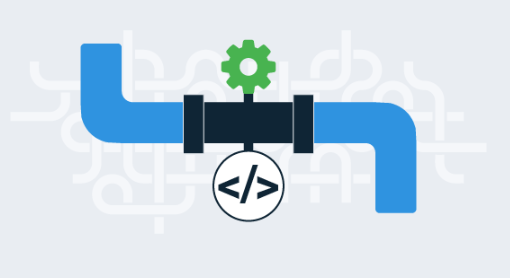In today’s fast-paced software development world, Continuous Integration and Continuous Deployment (CI/CD) have become essential practices. They help automate testing, building, and deploying code, ensuring that your applications are always in a ready-to-ship state. If you’re new to CI/CD, this guide will walk you through setting up your first pipeline using GitHub Actions, a popular and user-friendly tool integrated into GitHub.
Step 1: Setting Up Your Repository
If you haven’t already, create a new repository on GitHub. You can use an existing project, but for this guide, let’s assume you’re starting fresh.
- Create a new repository:
- Go to GitHub and click on New Repository.
- Name your repository, and choose whether it’s public or private.
- Initialize the repository with a README file.
- Clone the repository to your local machine:
git clone https://github.com/yourusername/your-repository.git
cd your-repository
Step 2: Create a Simple Application
For the sake of simplicity, let’s create a basic Node.js application.
- Initialize a Node.js project:
npm init -y
Create an index.js file:
console.log("Hello world!");
Step 3: Setting Up GitHub Actions
GitHub Actions uses workflows, defined in YAML files, to automate tasks like testing, building, and deploying code.
- Create a
.github/workflowsdirectory in your project root:
mkdir -p .github/workflows
- Create your first workflow file:
- Create a file named
ci.ymlinside theworkflowsdirectory. - This file will define your CI/CD pipeline.
- Create a file named
- Define the Workflow: Here’s a simple YAML configuration for testing your Node.js application:
name: CI Pipeline
on: [push, pull_request]
jobs:
build:
runs-on: ubuntu-latest
steps:
- name: Checkout code
uses: actions/checkout@v3
- name: Set up Node.js
uses: actions/setup-node@v3
with:
node-version: '16'
- name: Install dependencies
run: npm install
- name: Run tests
run: npm test
How does it work?
- name: This defines the name of your workflow.
- on: Specifies when the workflow should run. In this case, it runs on every
pushandpull_request. - jobs: Defines a series of steps that the workflow will execute. Here, we’re checking out the code, setting up Node.js, installing dependencies, and running tests.
Step 4: Testing Your Pipeline
Now that your pipeline is set up, it’s time to test it!
- Push your changes to GitHub:
git add .
git commit -m "Set up pipeline"
git push origin main
- Check the Actions tab in your GitHub repository:
- Navigate to the Actions tab.
- You should see your pipeline running. If everything is set up correctly, it will pass the build and test stages.
Step 5: Adding Continuous Deployment (Optional)
If you want to automatically deploy your code after it passes the tests, you can extend your workflow.
- Add a deployment step:
deploy:
runs-on: ubuntu-latest
needs: build
steps:
- name: Deploy to Production
run: echo "Deploying to production..."
- This is a placeholder for your actual deployment script. Depending on your environment, you could use services like AWS, Azure, or even simple FTP commands.
Optimizing Your Workflow
CI/CD pipelines are incredibly flexible and can be tailored to fit your specific needs. Here are a few ways to optimize your workflow:
- Parallel Jobs: Speed up your pipeline by running multiple jobs in parallel. For example, you can run tests on different environments simultaneously.
- Caching Dependencies: Use caching to avoid reinstalling dependencies every time your pipeline runs, saving valuable time.
- Environment Variables: Manage your pipeline’s configuration by storing environment variables securely in GitHub Secrets.
- Notifications: Set up notifications to alert your team when a build fails or a deployment is complete, ensuring everyone stays informed.
- Automated Rollbacks: Implement rollback mechanisms to automatically revert to the previous version if a deployment fails, minimizing downtime.
CI/CD it’s a powerful tool that can transform how you develop, test, and deploy software. By automating these processes, you not only increase efficiency but also improve the overall quality of your applications. GitHub Actions makes it easy to get started, and with the flexibility it offers, you can build a pipeline that perfectly suits your needs.

